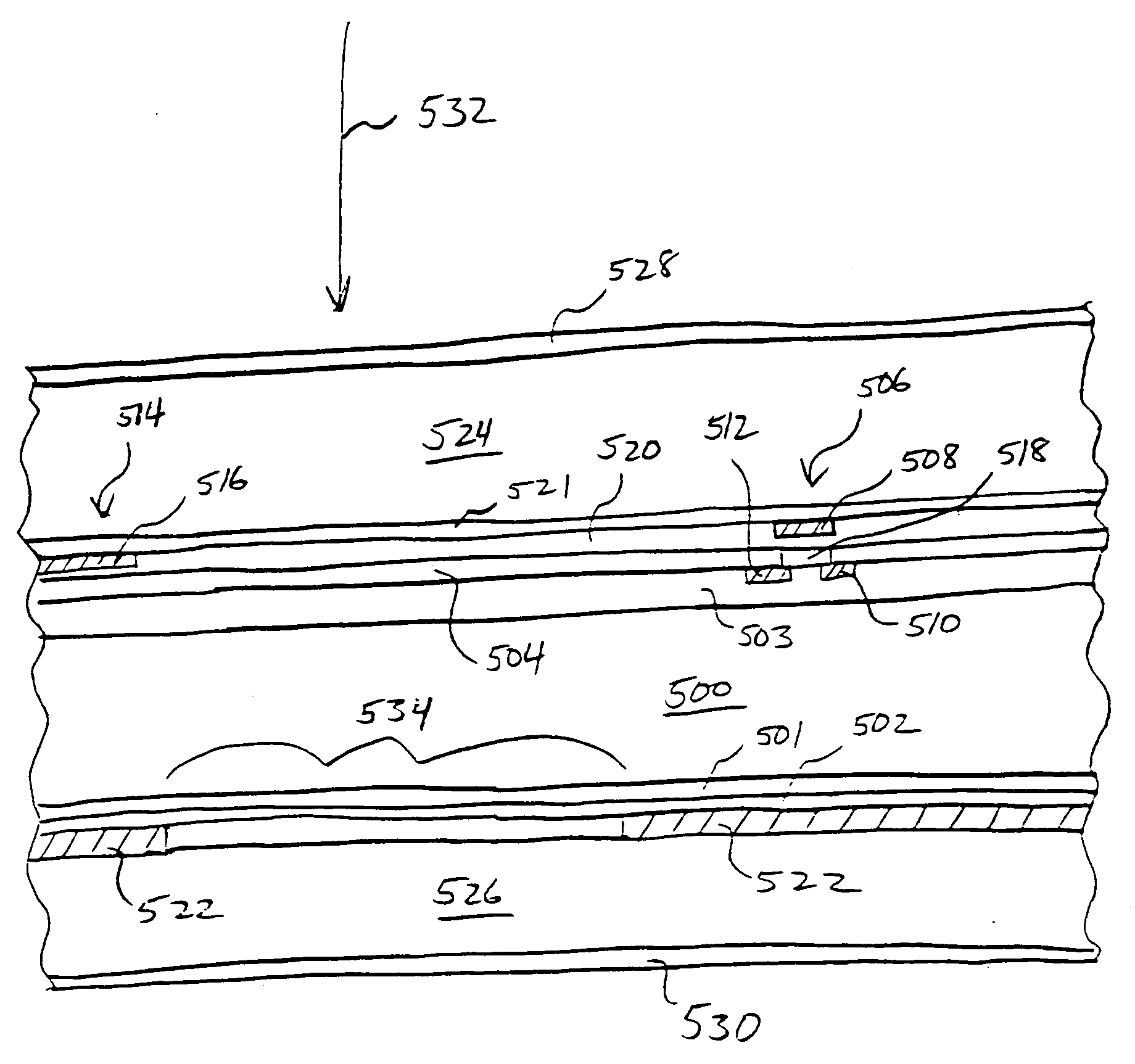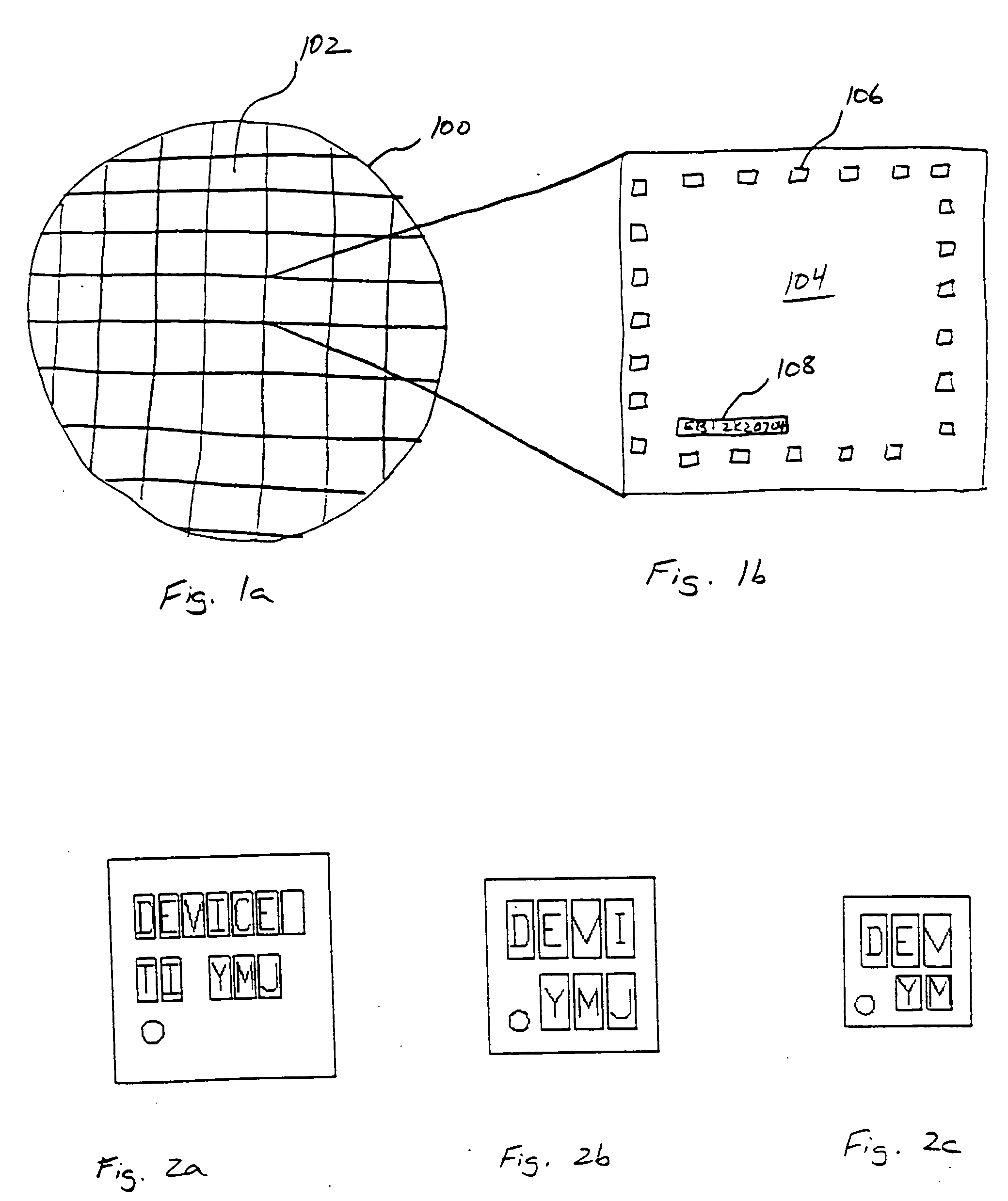Integrated circuit identification
a technology of integrated circuits and integrated circuits, applied in semiconductor/solid-state device testing/measurement, printing, instruments, etc., can solve the problems of complicated marking task, limited traceability of particular chips, and high cost of spa
- Summary
- Abstract
- Description
- Claims
- Application Information
AI Technical Summary
Benefits of technology
Problems solved by technology
Method used
Image
Examples
Embodiment Construction
[0019]FIG. 1a shows a plan view of a wafer 100 segmented into individual dice or chips 102. FIG. 1b shows detail of a particular chip 104, including bond pads 106, and an identifying mark 108. Ideally, the mark would contain information indicating the facility in which the chip was made, the day, month, and year on which it was made, the lot of wafers with which it was processed, as well as the number of the wafer in that lot, and, finally, the location the particular die occupies upon the wafer. Such a mark may appear as follows: “EBT2K20704-MIB-02-17,” where “EBT” is the fabrication facility, “2K2” is 2002, the year of fabrication, “07” is July, the month of fabrication, “04” is the fourth day of July, “MIB” is the lot identifier, “02” is the wafer number within the lot, and “17” is the die location on the wafer. Of course, a manufacturer ID also appears at some location on the chip. Putting this much information on a chip in a conventional size and lettering format can consume to...
PUM
 Login to View More
Login to View More Abstract
Description
Claims
Application Information
 Login to View More
Login to View More - R&D
- Intellectual Property
- Life Sciences
- Materials
- Tech Scout
- Unparalleled Data Quality
- Higher Quality Content
- 60% Fewer Hallucinations
Browse by: Latest US Patents, China's latest patents, Technical Efficacy Thesaurus, Application Domain, Technology Topic, Popular Technical Reports.
© 2025 PatSnap. All rights reserved.Legal|Privacy policy|Modern Slavery Act Transparency Statement|Sitemap|About US| Contact US: help@patsnap.com



